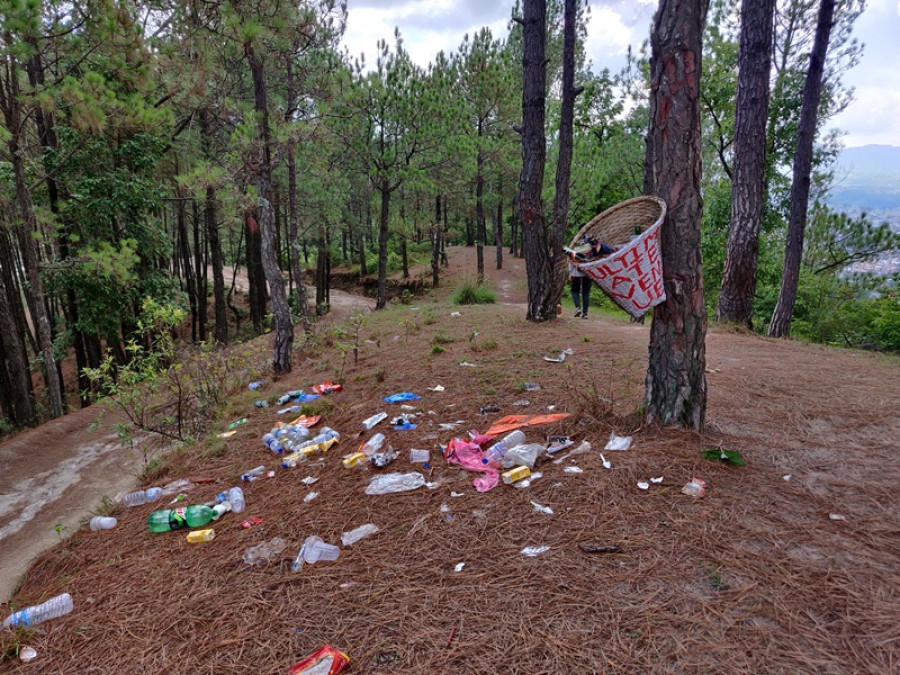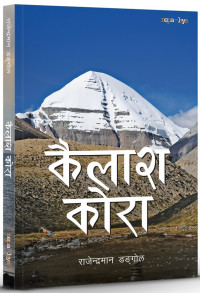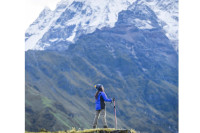Travel
The domestic tourism sector is growing--but so is its litter
As more and more Nepalis travel within the country, tourism stakeholders and environmentalists say that it’s important for tourists to travel responsibly and be mindful of the impact they have on the destinations they travel to.
Tsering Ngodup Lama
In 2015, when Rishav Adhikari trekked to Mardi Himal Base Camp, it was still a relatively unknown trekking destination.
“Since many people didn’t know about the trail, one would go on for hours without meeting a single person,” said Adhikari, a travel photographer based in Pokhara. “And there were very few tea houses on the trail, and most of them were pretty basic.”
But post-2015, when domestic tourism in the country boomed, Mardi Himal Base Camp’s popularity blew up too.
“The increase in the number of trekkers to the base camp has resulted in more lodges, and with better facilities, which has benefited the local economy,” said Adhikari. “But the surge in the number of trekkers has come with its own share of drawbacks. And one of the major ones is the huge increase of litter on the trail. This is very unfortunate.”
In September this year, Dawa Steven Sherpa, a tourism entrepreneur and an environmental activist, led an expedition to clean up base camps of several mountains in the Khumbu region. The expedition brought back more than two tonnes of trash.
In 2017 alone, eleven tonnes of trash was collected from Lukla to Everest Base Camp trekking route.
Over the last few years, locals in the Annapurna region, home to the famed Annapurna Circuit, have time and again raised concerns regarding excessive littering in the region’s popular trekking routes.
As more and more Nepalis travel within the country—many to destinations that once saw very limited travellers—tourism stakeholders and environmentalists say that tourism, if not done right, will have negative environmental consequences, and therefore it’s more important than ever to be mindful of the impact they have on the destinations they travel to.
“It’s a great thing that the domestic tourism sector is growing, as more and more Nepalis are travelling within the country, but it is also important that people learn how to travel sustainably,” said Raj Tamang, owner of Responsible Adventures, a Kathmandu-based trekking company.
A great place to start, says Tamang, is by being more responsible about how and where travellers dispose of their trash.
“Back in 2016, I was trekking to Gosaikunda with a group of foreign clients and there were some sections of the trail that were strewn with emptied plastic packets of wai-wai, biscuits, and other eatables,” said Tamang. “These things not only make for a sore sight but also harm the place’s natural ecosystem. The only people I have seen throw trash irresponsibly are our own people. What kind of impression are we setting by littering such remote and beautiful places?”
Tamang admits that things would have been much more convenient if there were waste bins on trails for travellers to throw their trash.
“The truth is there aren’t, but that shouldn’t be an excuse for people to throw trash irresponsibly,” said Tamang. “If people have no problem carrying packet noodles and biscuits while trekking, why can’t they carry with them the empty packets, which are much lighter, back and dispose of them properly?”
Environmentalist and forestry expert Binod Bhatta agrees with Tamang that littering is one of the major negative consequences of trekking trails opening up in remote areas.
“For many of us who live in a city like Kathmandu, one of the main reasons we travel for leisure outside the valley is because you get to see greenery and there’s much less pollution,” said Bhatta. “But if we are going to throw our trash everywhere in the places we travel to then what’s the point.”
It’s not just littering, Bhatta says, that tourists ought to be mindful about.
“As tourists, whatever you do, you got to think whether your actions are creating pollution—from noise, air, water, and soil,” said Bhatta. “I have seen tourists staying in community-run homestays in villages and they all seem to do is drink, blare loud music and party late into the night. I am not against playing loud music and partying but I don’t think villages, where people sleep early, are a place to do that and create sound pollution. One has to be respectful of the surroundings.”
Travelling to villages, says Bhatta, offers people a great opportunity to immerse in nature and get a better understanding of the local culture and way of life.
“That makes a much more rewarding trip,” said Bhatta. “But if you are going to a village to drink and party late into the night, you might as well do that in a club or a pub in the city.”
Sound pollution, says Tamang, is an issue that crops us all too often when Nepalis travel.
“A few years ago, one of my tour guides was staying the night with his guests at a lodge in the buffer zone of Bardiya National Park. At night, a few Nepali guests started playing loud music and partying,” said Tamang. “Apart from disturbing other guests, their action could also disturb the park’s wildlife, which could prove dangerous for everybody present in the lodge.”
Adhikari agrees that people’s fondness of dancing and partying while travelling shouldn’t come at the expense of other travellers.
Villages and communities that cater to tourists, says Bhatta, also have a role to play.
“Villages and communities must make it mandatory for visitors to attend a brief orientation programme during which they are briefed on the do’s and don’ts in the community,” said Bhatta.
Another point Adhikari stresses travellers need to be conscious of is people’s habit of going to destinations that are trending.
“One of the most recent examples I can give is of Manung Kot in Damauli, Tanahun. When the place started trending in social media, hundreds of people started visiting it daily and the impact was visible in the amount of trash that was thrown around in the area,” said Adhikari. “We need to be aware of the negative consequences overtourism can have on any destination. I always tell people to not go where everyone is going but rather to research on new relatively unknown destinations and travel to those places.”
Overtourism is a relatively new term given to the phenomena of a destination witnessing too many visitors.
Having witnessed the negative impact of overtourism on destinations, says Adhikari, is the reason why he sometimes doesn’t tag the name of the destination he is in on his Instagram page, which has more than 13,000 followers.
“There’s this beautiful secluded place near Begnas lake that I used to frequent and post in my social media. When the place got popular, people started arriving in droves and litter started appearing and it destroyed the beauty of the place,” said Adhikari. “So every time I post about a particular place, I cannot help but think about the impact it’s going to have.”
People, says Tamang, shouldn’t travel for the sake of reaching the destination.
Travelling responsibly, says Tamang, is much easier than people think. “Wherever we travel, we should only leave footprints and take with us nothing but memories,” said Tamang. “We live in a beautiful country and it is our responsibility to keep the beauty intact for the future generation.”




 18.12°C Kathmandu
18.12°C Kathmandu










